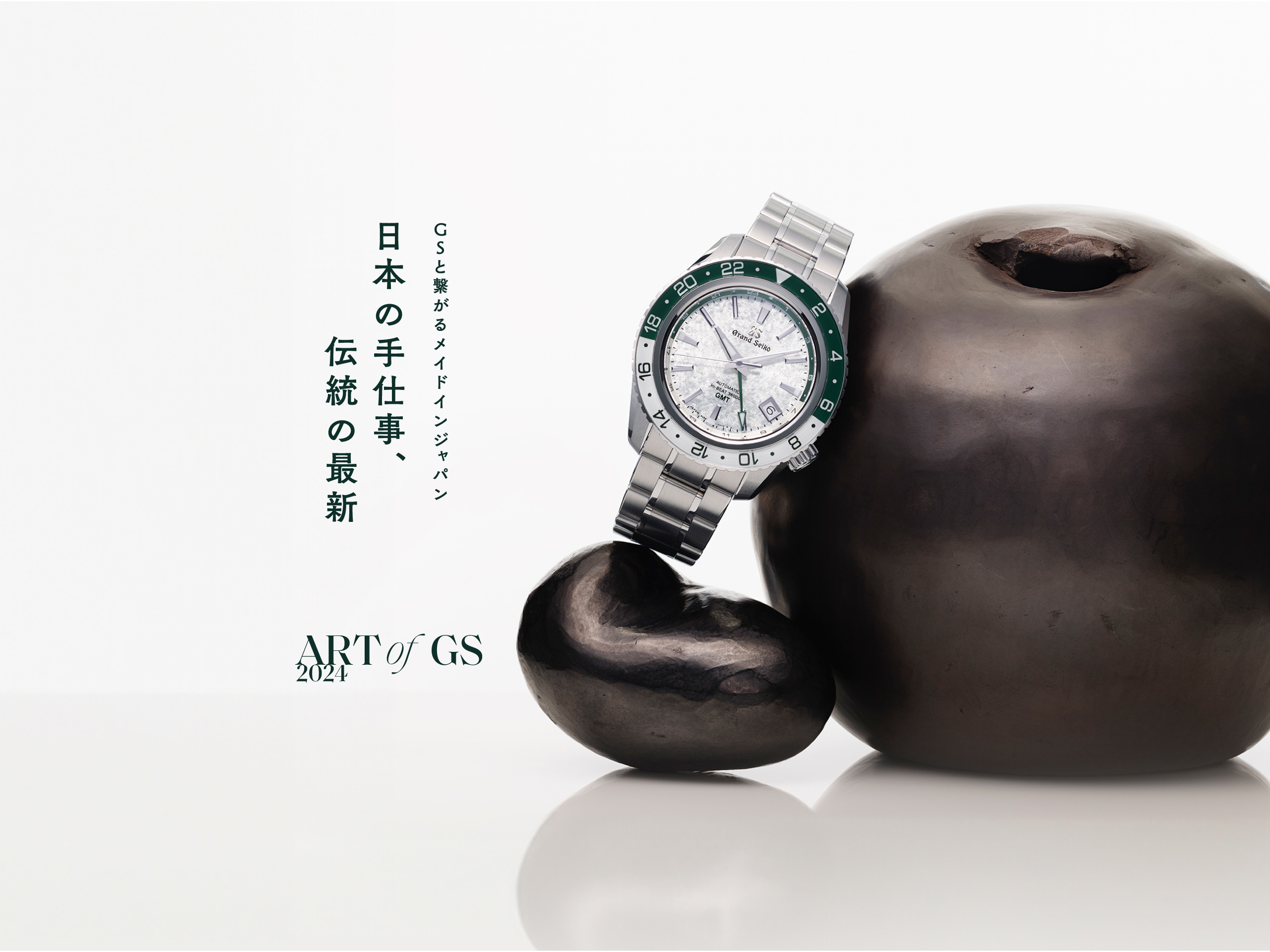
The history of black pottery, in which carbon covers the surface through carbonization firing, is said to have originated in ancient China. It began to be produced in Japan from the Jomon period, about 2,300 to 13,000 years ago. Kōichi Uchida has not only studied Japanese pottery production but has also learned ceramic techniques from around the world. He creates works with techniques found in African and South American clay pottery, as well as Egyptian black-topped pottery, and he has been presenting his work since he was in his twenties. While fine-grained clay is commonly used in black pottery, Uchida combines multiple clay particle sizes and varies the polishing method after firing to expand the range of his expression. Black pottery is a test of the modeling skill because of its simplicity. This artwork achieves a true beauty reminiscent of the SBGJ277, which embodies rich expressions through its carefully polished case and beautifully finished dial.
The term “snow valley,” or sekkei in Japanese, refers to a phenomenon seen in mountains at high elevations, where snow accumulates and remains even in the summer. The dial of the Hi-Beat 36000 GMT SBGJ277 gives the impression of such snowfields, offering a refreshing and cool inspiration. The magnificent mountain scenery of snow juxtaposed with the greenery of summer is reproduced in the contrast of the snow-white dial alongside the green of the rotating bezel. These seasonal gradations provide a beautiful expression of the passage of time. Despite the robust design and 44.2mm case, the watch sits comfortably on the wrist thanks to a bracelet crafted from stainless steel. A GMT function enabled by the mechanical Caliber 9S86 makes this a durable yet elegant travel watch built for mountains and beyond.
Photography = Naohiro Tsukada
Text = Natsuki Ando